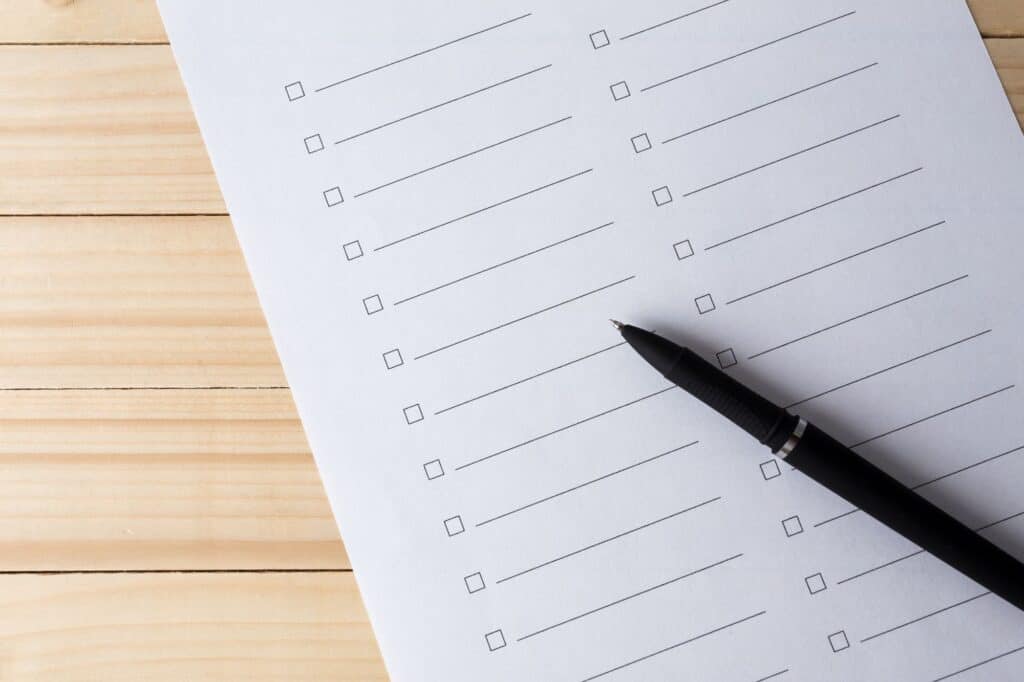Planning a move in Wood Green and seeking organisational nirvana? Look no further. Our guide breaks down how to create a moving checklist into actionable steps, ensuring nothing slips through the cracks. From boxing up your belongings to notifying your utility companies, we’ve got the essentials covered. Get ready to move with confidence and a foolproof checklist at your side.
Key Takeaways
- Kick off your move with a detailed checklist to keep track of tasks from setting a move date and budget to final walk-through; it’ll be your lifeline.
- Declutter before you pack and label everything clearly; this will save you time, money, and stress both during the move and when unpacking in your new home.
- Don’t forget the little things like updating your address with various institutions, confirming arrangements with movers and utilities, and establishing connections in your new community.
Decoding the Moving Process: Setting the Stage
Embarking on the moving journey without a plan is akin to setting sail in uncharted waters. The key to a stress-less move is meticulous organisation, and it starts with a comprehensive moving checklist. This checklist isn’t just a list of tasks; it’s your strategic plan to conquer the moving process. Think of it as your moving binder or digital dashboard that guides you from the moment you decide to relocate until you start unpacking in your new nest.
Now, let’s dissect this organisational blueprint for a seamless relocation.
Pinpoint Your Move Date
Timing is everything when you’re about to play the moving game in Wood Green. Choosing an exact date is the cornerstone of your entire moving house checklist, and it requires a delicate balance of personal schedules, lease agreements, and academic calendars. Once you’ve landed on that golden day, circle it in red and let it guide all your moving process decisions. It’s the day you’ll need to have all your boxes packed, your moving team ready, and your mind focused on the journey ahead.
Make sure to confirm this move date with all parties involved, from family members to the moving company, to keep everyone aligned.
Assemble Your Moving Team
Whether you’re considering a DIY move with a band of loyal friends or hiring professional movers, your choice of moving help will either lift the weight off your shoulders or add to it. Gather estimates from at least three different moving companies if you’re leaning towards the pros.
If you decide to manage the move with the help of family and friends, remember to book a moving van in advance and have a plan for packing boxes and loading all your belongings. But don’t forget, the best team is one that’s aligned with your needs, budget, and move date.
Determine Your Moving Budget
The financial side of moving house can be as daunting as the physical move itself. To prevent any surprise expenses from creeping up on you, list down every potential cost associated with your move. Think beyond the moving truck to the packing boxes, the potential storage unit fees, and even the pizza you’ll offer your friends for helping you load the moving van.
Once you’ve got a clear picture of your expenses, set funds aside. Having a dedicated moving budget will keep your finances in check and your stress levels down.
Inventory Insights: What Stays and What Goes
Before you even begin packing, take a long, hard look at your belongings. This is your chance to declutter and decide what really deserves a spot in your new life. It’s not just about saving on moving costs; it’s about starting afresh with only the items that bring value to your life.
Now is the time to get ruthless, whether it’s about that old armchair or the mountain of leftover food in your pantry. Lightening your load can mean a lighter moving truck and a lighter heart as you step into your new home.
The Purge Plan
Consider the purge plan as your strategic approach to tackle clutter. Ask yourself: When was the last time I used this? Does it hold sentimental value? Is it essential? If it’s gathering dust, it’s time to let go. Sell those once-loved items at a garage sale or donate them to someone who needs them more.
Remember, the less you have, the less you have to pack, move, and unpack. It’s a simple equation for a simpler move.
Secure Storage Solutions
Sometimes, you can’t take everything with you, but you’re not ready to say goodbye either. That’s where a secure storage unit comes to the rescue. Whether there’s a gap in move-in dates or you’re downsizing but can’t part with certain treasures, renting a storage unit offers a temporary home for your possessions.
TIP
Consider a secure storage unit your temporary sanctuary for possessions you’re not ready to part with. It’s the perfect place to keep seasonal clothing, spare furniture, and cherished collectibles safe until you’re fully settled into your new space.
Packing Protocol: Organising Your Belongings
With the moving date and budget set, it’s time to face the ultimate challenge of relocation: packing. Start by rounding up all the packing boxes, bubble wrap, and tape you can get your hands on. Begin with the items you won’t miss in the immediate future – like the holiday decorations or that fondue set you only use once in a blue moon.
While you’re busy wrapping your belongings, maintain a detailed inventory to keep track of all your items. Proper organisation at this stage is the secret to an efficient unpacking process later on.
Collecting Packing Materials
Before you start packing, you need an arsenal of materials at your disposal. Scour your network for free boxes – friends, family, and even local businesses can be goldmines for packing supplies. Check out social media marketplaces or community groups for people looking to offload their moving supplies.
Be savvy and save money where you can because every penny counts when you’re moving house.
Systematic Labelling Tactics
Consider labelling as a way of leaving breadcrumbs for yourself – it’ll lead you directly to what you need when you begin to unpack in your new home. A colour-coded system or numbered labels corresponding to your inventory list will make locating and organising your belongings a breeze. It’s like a secret code that only you understand, which will pay off when you’re looking for your favourite mug on the first morning in your new home. Using label boxes can further enhance this process, ensuring a smooth transition.
Creating an Essentials Box
In the whirlwind of moving day, the last thing you want is to be rifling through boxes for your toothbrush. Enter the essentials box: a survival kit for the first night in your new abode. Think of it as your first-aid kit for moving – it contains all the necessities you’ll need immediately post-move, like pyjamas, toiletries, and a few snacks to keep you fueled.
It’s the box that says, ‘Welcome home,’ so make sure it’s the last thing you pack and the first thing you unpack.
Address Alterations: Updating Your Information
Moving isn’t just about transporting your belongings; it’s about transplanting your life. That means updating your address with:
- Banks
- Schools
- Subscription services
- The post office
It’s a task that’s easily overlooked in the chaos, but it’s crucial for a smooth transition.
Take a proactive approach and begin informing everyone about your new address ahead of time. It’s one of those behind-the-scenes tasks that will make your move feel complete.
Postal Service Procedures
The post office will become your best friend when it comes to managing your mail throughout the moving process. Whether you’re filling out a change of address form online or in person, make sure you have your identification documents ready to prove you are who you say you are. It’s a straightforward task that can save you from a world of missed bills and lost correspondence.
Notifying Utility Companies

The last thing you want is to move into your new house only to find the lights won’t turn on. Avoid such mishaps by giving your utility companies a heads-up about your move date.
This is also the perfect time to scout out new internet providers and get your internet connection service set up so you can start enjoying your new home right away. And remember to keep your suppliers’ contact information handy for quick access in case you need to troubleshoot any issues after the move.
Personal Documentation Updates
In the midst of the moving madness, don’t forget the little things – like updating your driver’s license and school records. These important documents are easy to overlook, but they’re crucial for establishing your new life. Ensure your employer, insurance company and medical providers are all aware of your new address.
Taking care of these details will help you avoid any unnecessary headaches down the road and keep your transition seamless.
Final Preparations: The Week Before Moving Day
The countdown has begun, and it’s almost time to say goodbye to your old home. In the final week, tie up any loose ends: finish packing the last of your belongings, clean the place for the next occupants, and start preparing your appliances for the move.
It’s the time for final checks and adjustments, ensuring that when moving day arrives, you’re ready to roll out without a hitch.
Confirm Arrangements with Movers
With the move just around the corner, it’s a good idea to make a final call to your moving company to confirm all arrangements. Here are some things to double-check:
- Inventory list: Go over your inventory list with the moving company to make sure everything is accounted for.
- Arrival time: Re-confirm the arrival time with the moving company to ensure they will be there when you need them.
- Layout of new home: Provide the moving company with a layout of your new home so they know exactly where to place your belongings.
By confirming these details, you can ensure a smooth and efficient move, and start feeling at home in your new place a little faster.
Prepare Appliances and Home Systems
Your trusty appliances have served you well, so give them the care they deserve before the move. Here are some steps to follow:
- Unplug your refrigerator and clean it thoroughly.
- If necessary, defrost your refrigerator to ensure it’s ready for transport.
- It’s also a kind gesture for the new occupants to leave the appliances in good condition – think of it as moving house karma.
Travel and Childcare Arrangements
Moving day can be quite chaotic, particularly if you’re also managing little ones. Make sure you’ve got travel arrangements and childcare sorted out well in advance. Whether it’s coordinating with a family member or a trusted babysitter, ensuring your children are taken care of will allow you to focus on the task at hand.
… coordinating with a family member or a trusted babysitter, ensuring your children are taken care of will allow you to focus on the task at hand.
And if you’re moving far, consider how you’ll stay connected and manage school transitions.
On the Big Day: Navigating Moving Day
The day you’ve been preparing for has finally arrived, and it’s time to execute your plan. This is when your moving checklist becomes your bible, guiding you through each step of the day. From verifying the moving truck to guiding movers and handling last-minute expenses, today is the day all your preparation pays off.
Maintain focus, keep things organised, and don’t forget to safeguard both your old and new spaces to prevent any potential damage.
Protecting Your Old and New Spaces
While you’re excited to start life in your new house, don’t forget about the one you’re leaving behind. Protect both your old and new spaces by using floor protectors and door jamb protectors to prevent scratches and scuffs.
These small steps can save you from losing your security deposit or facing repair costs as you settle into your new property.
Managing the Move
Today’s mantra: communication is key. Keep an open line with your moving company and ensure they’re clear on your inventory and special instructions. For those who’ve enlisted the help of friends, delegate tasks to keep the day running smoothly. Remember to show your gratitude – a little thank you can go a long way in keeping morale high on such a hectic day.
By staying on top of things, you’ll navigate this pivotal day with finesse and, dare we say, a bit of fun.
Final Walk-Through and Handover
Take a moment for one last walkthrough of your old home. Check for any forgotten items and make any necessary minor repairs to ensure you leave the place in good condition. Leave a note for the new owners with any important home information they might need, like where to find the circuit breakers or how the thermostat works. And don’t forget to label and hand over all keys, so they’re not left wondering how to get into the shed or garage.

Settling In: Post-Move Essentials
Congratulations, you’ve made it! With all the boxes inside, it’s now time to turn this new house into your home. Start by unpacking strategically, focusing on the rooms and items you’ll need first. Introduce yourself to your new neighbours and explore your surroundings.
It’s these small post-move essentials, a few items, that will make your new place feel like a real home.
Unpack Strategically
While unpacking may initially appear daunting, a strategic approach can make it less overwhelming. Set up your kitchen first so you can fuel your unpacking efforts with a home-cooked meal. Next, ensure you have a comfortable place to sleep by setting up your bed and unpacking your toiletries.
Remember, you don’t need to unpack everything in one day. Take your time to find the perfect spot for your belongings and make your new house feel like home.
Establishing Connections
While settling in, remember the significance of establishing connections within your new community in Wood Green. A friendly smile and a quick introduction can open the door to new friendships and make you feel part of the neighbourhood. Attend local events or invite your neighbours over for a cup of coffee.
These connections will not only enrich your social life but also provide a support system as you adapt to your new surroundings.
Transitioning to the New Community
Moving to a new community is more than just a physical transition; it’s about finding your place within a new social fabric. Join local clubs or groups that align with your interests to meet like-minded individuals.
Take regular walks in your neighbourhood to familiarise yourself with the area and greet your neighbours. These small steps can make a big difference in how quickly you feel at home in your new environment.
Summary
And there you have it – your comprehensive guide to a stress-free relocation. From pinpointing your move date to settling into your new community, following this moving checklist will ensure nothing is left to chance. Embrace each step with enthusiasm, and remember that every box packed, every label made, and every friendly hello is a step towards turning your new house into a home. Happy moving!
Frequently Asked Questions
When should I start preparing for my move?
You should start preparing for your move 8 weeks before the moving date to have enough time to organise, declutter, and pack without rushing.
How can I save money on packing materials?
You can save money on packing materials by asking friends, family, and local businesses for free boxes, and checking online community groups for people giving away moving supplies. Good luck!
What should I include in my essentials box?
Be sure to include toiletries, a change of clothes, snacks, and basic tools for assembling furniture in your essentials box. You’ll need them right away when you arrive at your new place.
How do I ensure my mail is forwarded to my new address?
To make sure your mail gets forwarded to your new address, fill out a change of address form with your postal service either online or at a local post office, and provide the necessary identification.
What are some ways I can meet new people in my community after I move?
You can meet new people in your community by joining local groups or online forums, participating in neighbourhood events, and introducing yourself to your neighbours. Get out there and start making connections!







